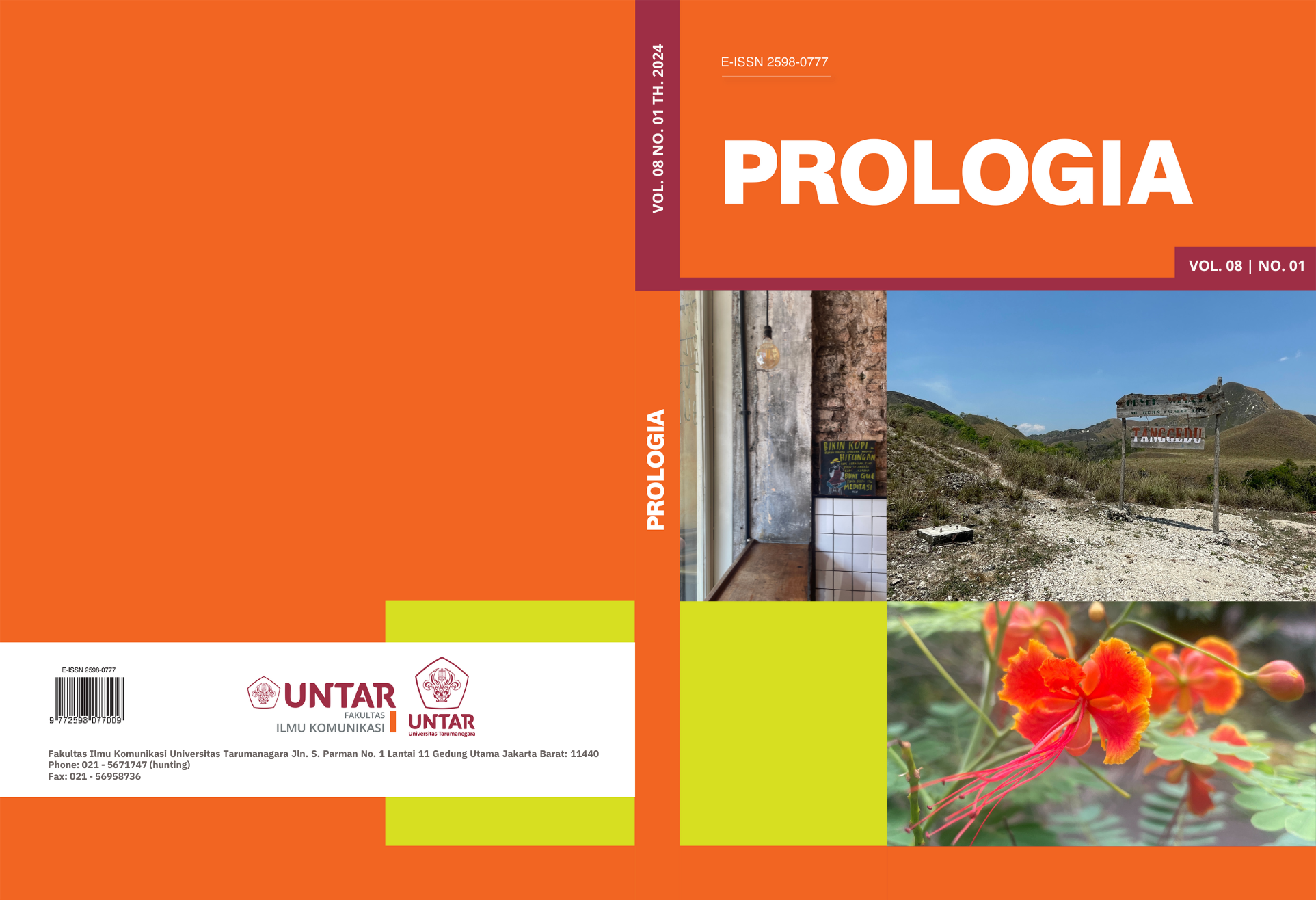Pengaruh Electronic Word of Mouth (E-WoM) terhadap Keputusan Pembelian Tiket Film Oppenheimer
Main Article Content
Abstract
Creating films is a risky business that requires a profound understanding of audience motivation and strategies to bring them to the cinemas. In the digital era, electronic word of mouth (e-WoM) as a means to exchanging information on social media, particularly through platforms like X, plays a key role in influencing film ticket purchase decisions. e-WoM activities on X, such as tweets and retweets, serve as crucial indicators of a film's popularity. However, it is essential to note that popularity on social media is not always positive. This motivates the aim of this research, which focuses on examining the influence of e-WoM on X on the decision to purchase tickets of film "Oppenheimer." The study was conducted among the followers of @moviemenfes as the research population, with a sample size of 100 followers chosen through nonprobability sampling (specifically, purposive sampling) methods. Data were gathered through the questionnaires distribution to the sample, and data analysis was assisted by using SPSS 27th version, employing techniques such as validity testing, normality testing, reliability testing, T-test, F-test, simple linear regression analysis, Pearson's correlation test, and linearity test. The research findings indicate that e-WoM significantly influences the decision to purchase tickets for the film "Oppenheimer".
Membuat film merupakan bisnis berisiko yang membutuhkan pemahaman mendalam terhadap motivasi penonton dan strategi untuk membawa mereka ke bioskop. Dalam era digital, electronic word of mouth (e-WoM) sebagai metode pertukaran informasi di media sosial, terutama melalui platform seperti X memainkan peran kunci dalam memengaruhi keputusan pembelian tiket film. Aktivitas e-WoM di X, seperti tweet, retweet, dan lainnya, menjadi penanda penting popularitas suatu film, namun perlu dicermati bahwa popularitas di media sosial tidak selalu bersifat positif, sehingga mendorong penelitian ini untuk melihat pengaruh e-WoM pada platform X terhadap keputusan pembelian tiket film "Oppenheimer". Penelitian dilakukan pada para pengikut @moviemenfes sebagai populasi penelitian, dengan jumlah sampel sebanyak 100 pengikut yang dipilih melalui metode pengambilan sampe non-probabilitas (khususnya purposive sampling). Data dikumpulkan melalui penyebaran kuesioner terhadap sampel dan proses analisis data dikerjakan menggunakan aplikasi SPSS versi 27 dengan menggunakan teknik uji validitas, uji normalitas, uji reliabilitas, uji T, uji F, uji regresi linear sederhana, uji korelasi Pearson's, dan uji linearitas. Temuan dari penelitian menunjukkan bahwa e-WoM memiliki pengaruh yang signifikan pada keputusan pembelian tiket film "Oppenheimer".
Article Details

This work is licensed under a Creative Commons Attribution-ShareAlike 4.0 International License.
This work is licensed under a Prologia Creative Commons Attribution-ShareAlike 4.0 International License.References
Álvarez-Monzoncillo, J. M., de Haro Rodríguez, G., & Picard, R. G. (2018). Digital word of mouth usage in the movie consumption decision process: the role of Mobile-WOM among young adults in Spain. JMM International Journal on Media Management, 20(2), 107–128. https://doi.org/10.1080/14241277.2018.1471606
Azeharie, S., & Kusuma, O. (2014). Analisis Penggunaan Twitter Sebagai Media Komunikasi Selebritis di Jakarta. Jurnal Komunikasi Universitas Tarumanagara. https://doi.org/https://doi.org/10.24912/jk.v6i2.35
Hasan, A., & Setiyaningtiyas, N. W. (2015). Pengaruh Electronic Word of Mouth Pada Media Sosial Facebook Terhadap Keputusan Berkunjung ke Desa Wisata Nglanggeran Gunungkidul. Jurnal Media Wisata (Vol. 13, Issue 1). https://doi.org/https://doi.org/10.36276/mws.v13i1.217
Kotler, P., & Keller, K. L. (2016). Marketing Management. Pearson Education Limited.
Mandjar, T. L., & Sukendro, G. G. (2022). Pengaruh Media Sosial Twitter @ohmybeautybank terhadap Minat Beli Kosmetik Lokal. Prologia. https://doi.org/https://doi.org/10.24912/pr.v6i2.15474
Menon, D. (2022). Uses and gratifications of educational apps: A study during COVID-19 pandemic. Computers and Education Open, 3, 100076. https://doi.org/10.1016/j.caeo.2022.100076
Oh, C. (2013). Customer engagement, word-of-mouth and box office: the case of movie tweets. Int. J. Information Systems and Change Management (Vol. 6, Issue 4). https://doi.org/10.1504/IJISCM.2013.060976
Puriwat, W., & Tripopsakul, S. (2022). Consumers’ Attitude towards Digital Social Responsibility: Impacts on Electronic Word of Mouth and Purchase Intention. Emerging Science Journal, 6(1), 64–74. https://doi.org/10.28991/ESJ-2022-06-01-05
Rahaman, M. A., Hassan, H. M. K., Al Asheq, A., & Islam, K. M. A. (2022). The interplay between e-WoM information and purchase intention on social media: Through the lens of IAM and TAM theory. PLoS ONE, 17(9 September). https://doi.org/10.1371/journal.pone.0272926
Sugiyono. (2014). Metode Penelitian Kuantitatif, Kualitatif, dan R&D. Alfabeta.
Sugiyono. (2018). Metode Penelitian Kuantitatif, Kualitatif, dan R&D. Alfabeta.
We Are Social. (2023). The Changing World of Digital in 2023. https://wearesocial.com/uk/blog/2023/01/the-changing-world-of-digital-in-2023/



